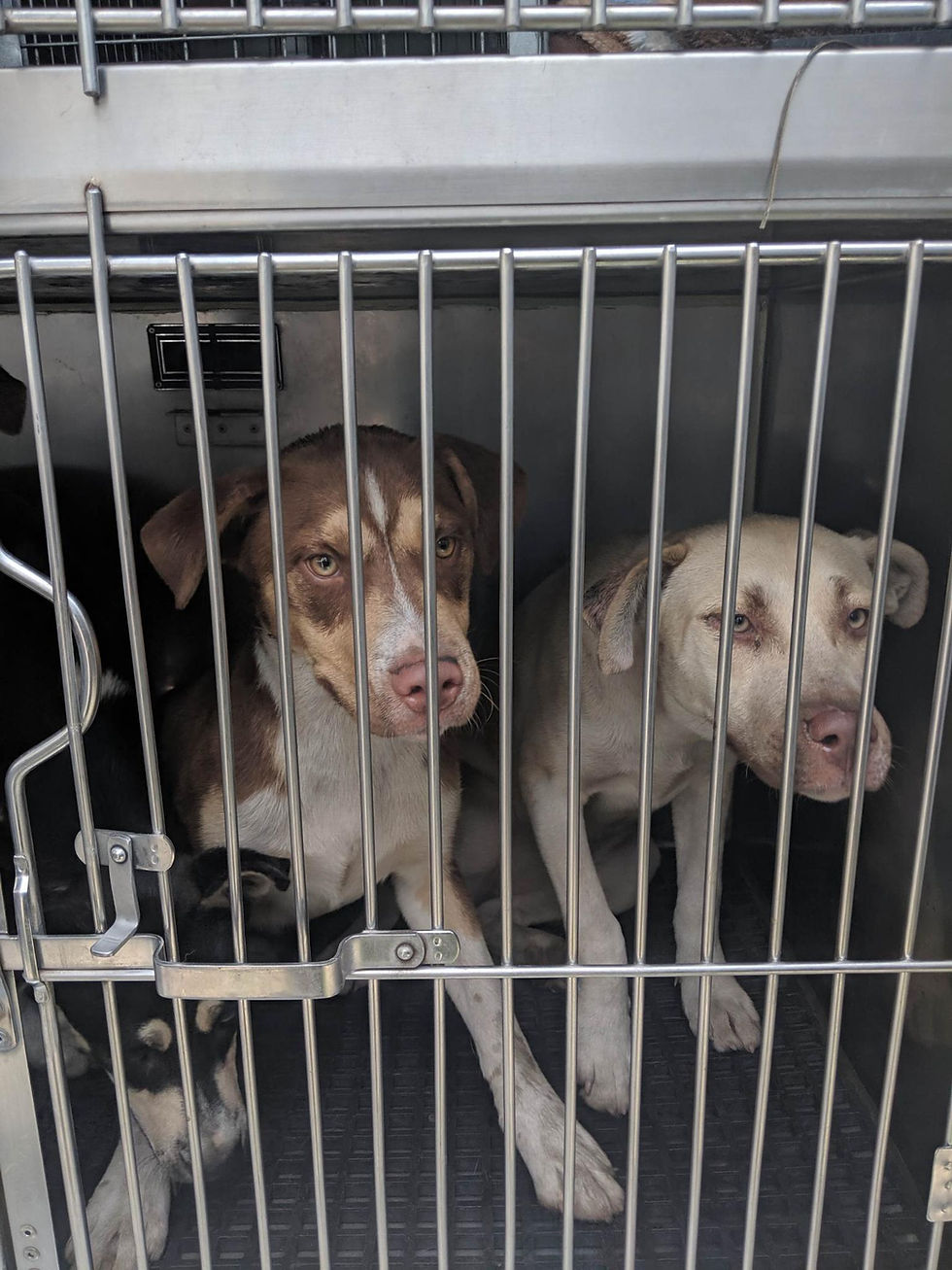It's Canine Parvovirus season! Is your pup protected?
- Tom Dock, Noah's Animal Hospitals

- Aug 5, 2022
- 2 min read
Updated: Aug 11, 2022
Two years ago, I spent time looking at the impact that the coronavirus pandemic had on pet owners and whether those owners were keeping up with preventive care, like vaccinations. Overall, it did appear that increasing cases of canine parvovirus in the summer of 2020 was tied to decreasing rates of vaccination.
So where are we now?

So far in the summer of 2022, our three emergency hospitals here in Indianapolis have done 70 percent MORE parvo tests than they did in 2021, for a total of 119 more tests in just the two months of June and July. 290 dogs have been tested at our three hospitals in just 61 days. There’s no easy method to determine how many tests were positive vs. negative, but anecdotal evidence of clinics whose isolation wards are full or smaller clinics referring out to other hospitals seems to point to another rough year when it comes to this deadly disease. The local Humane Society quotes treating 50 dogs for parvo so far this summer.
Canine parvovirus attacks rapidly dividing cells in the intestines known as “Crypt cells.” The loss of these cells leads to the excessive and bloody diarrhea that is the hallmark of this illness. In addition, parvo makes the dog feel rotten and vomiting is often seen as well. Together, the vomiting and diarrhea lead to profound dehydration.
Beyond the GI signs, canine parvovirus also likes specific cells in the bone marrow that generate our front-line immune cells known as neutrophils. Without these neutrophils helping to protect the pet, opportunistic bacteria invade the body from the gut and set up secondary infections that further sap the pet’s resources. Bottom line, our pets don’t die from canine parvovirus, they die from dehydration and secondary infections.

Optimal treatment is to have the pet stay in the hospital on IV fluids, anti-nausea medications, and antibiotics. This gives them the very best chance to survive and recover. Still, even with the very best in care, about one to two out of 10 cases will still pass away. Due to the costs of hospitalization (three to four days is usually in excess of $3000), many owners try to see if they can treat the pet on an “outpatient” basis with subcutaneous fluids and oral medications. While this may be an option for some pets, the chances of survival will decrease rapidly, and it means that YOU will be the one providing the medical care. This will include providing injections, giving fluids under the pet’s skin, and giving pills orally to a pet who is nauseous and not wanting to eat.
It's also vital to remember that canine parvovirus is highly contagious, especially to younger and/or unvaccinated dogs. The virus survives in the environment for years and can be carried into your home on your clothing or your shoes.
Your best option: VACCINATE YOUR PETS and follow your veterinarian’s recommendations for boosters and adult vaccinations. Canine parvovirus vaccine is considered a “core” vaccination by the American Animal Hospital Association which means the vaccine should be given on a regular basis. Don’t let your pet end up suffering from this preventable disease!










Comments